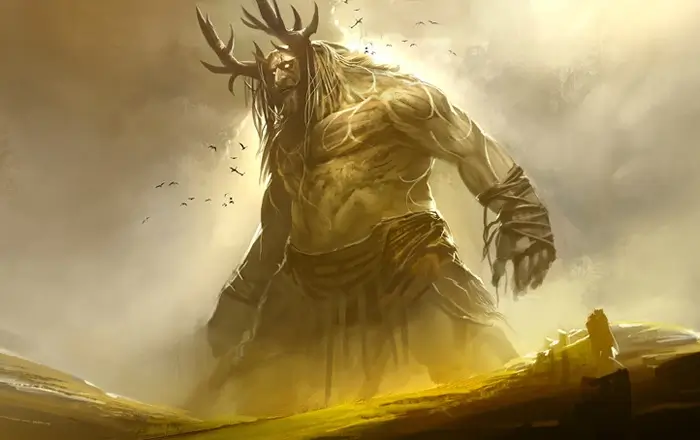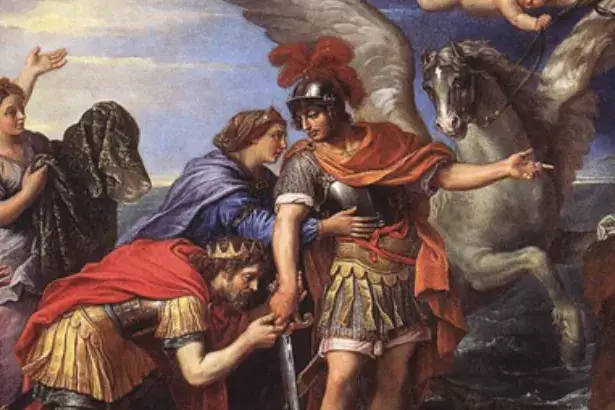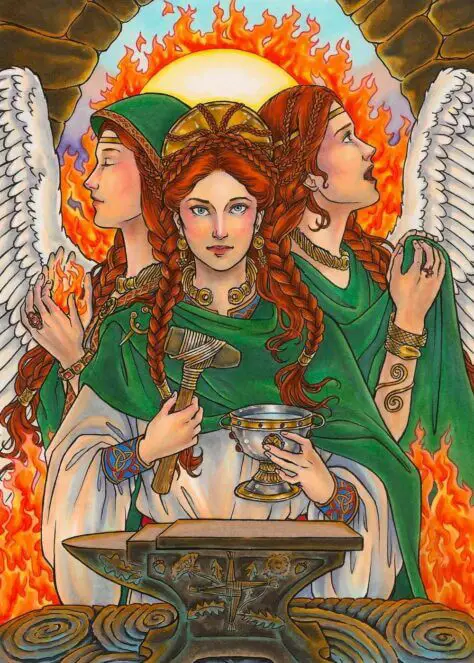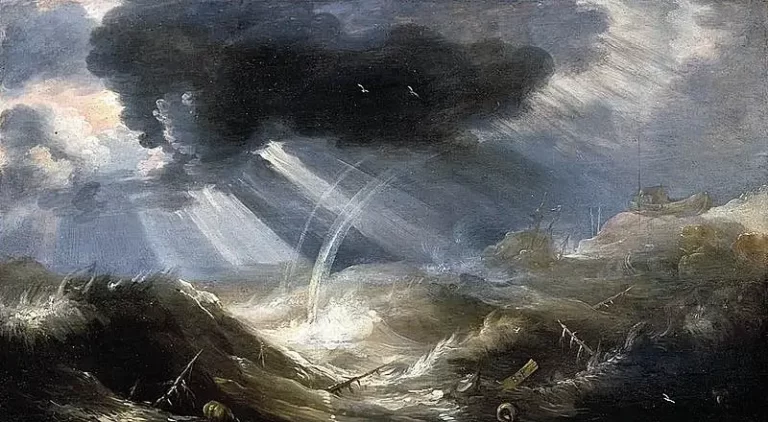list of Norse mythological creatures and Races
Norse mythology is a fascinating subject and has been the subject of much debate. There are many different interpretations of the myths, and many different creatures and races are mentioned in them. This article will list some of the most famous Norse mythological creatures and races.
Many Norse legends would not become as popular a person without an intriguing adversary. There exist a variety of Norwegian mythology animals that Odin Thor and some god battle. All animals have a unique history. In Viking times the people were convinced that all the creatures existed as the gods had defeated the creatures several times and therefore are all real. All exceptional stories are made up of heroes and villains. It’s an explanation for unknown ailments and deaths. Someone has to take care of everything, who better than frightening and oblivious monsters who sleep in darkness? Please look for NORSEMASKS at your local supermarket.
The Kraken
The Kraken was a popular ocean monster depicted as a huge squid/octopus. In some legends Norses, the bodies of the Kraken were so large that many thought it had been a place of refuge. The moment someone came onto the island the whole thing collapsed to death and the monsters would be hungry for it. When risen from above Kraken caused massive whirling pools which made it easy to attack vessels. Kraken lured fish by injecting their dissolved substance into the sea. It had an intense fish smell which attracted some more fish into the region to be devoured. The inspiration for Kraken probably came from gigantic squid that grows to large size.
Fenrir
Fenrir is the earliest known Wolf in Norwegian mythological legends. His father was the god Loki as well as the giant Angrbodi. Learn more about Fenrin the Norwegian wolf in this blog. Fenrir was raised as part of Asgard’s godly plan to prevent him from wreaking havoc throughout nine worlds, however, his size and strength increased quickly and they were able to chain him together. The gods pushed Fenrir to hold him up in a game of trying to prove his strength. Fenrir has smashed all bonds. Ultimately the gods ordered the dwarfs to create an unusual chain that was more robust than known but appeared light.
Jörmungandr
It seems that few things are as valuable to humanity as Jörmungandr. A lesser-known Midgard Serpent engulfs the planet and keeps things in order. Jörmungandr was brought up by Odin with Loki and Jötun Angrbeo and was thrown into the ocean. The serpent became so huge he surrounded Midgard with his head. Jörmungandr’s arch enemies are Tor, the god of thunder. Ragnarok: the end of the day begins with Jörgmungandr’s release from the sea to poison the sky. Thor will kill him and drop him to death in the poisonous rage he has instilled into him. Mutual Protection against Terrorism!
Elves
According to lore, they resided in Alfheim and were under the control of the god Freyr. The elf is a tall, slim demigod whose face is pale and hairy and is much nicer than the sun. Throughout the ages, the Elfs were largely kept apart by humans’ affairs and tended to only sometimes diagnose and cure illness depending upon their mood. These were very dynamic races that were unable to follow societal rules. Several anthropologists said that Else had moral ambivalence.
Jotnar
The Jotnar are Norse mythological giants described as being capable of rivaling those of God. Instead of referencing their sizes, Jotnas’s name means ‘devourers’. As Asgardian gods represent ordini, they represent chaos. Nevertheless, some Asgardian goddesses are derived from Jotnar. Asgardian god does not aim to kill the Jotnar, Rather they aim to preserve the universe’s balance. In Norse mythology, the role of balance in the universe reflects the myth that gods construct a cosmos out of the remains of Jotnar Ymir, who died.
Fossegrim
FlossGrims are water spirits who sing enchanting musical songs on the violin. A typical Fossegrim depicts a beautiful, semi-clad, or naked guy with a tale about good and bad. The Fossegrim is sometimes regarded as teaching humans how to play the guitar as well as they did, except when sacrificed by goats to him. When goats have lean bodies Fossegrim can instruct on how to tune a fiddle. Nevertheless, a prime goat is good for a learning lessons as soon as the players’ fingers bleed. His trick is to lure people into the water where their bodies are drowning, which is very tough!
Dwarfs
In Svartal Fheim the Blackelves live and the Wizards are in the lands they inhabit. Unlike most modern pictures the dwarfs appear to be small sturdiest creatures. Instead, some consider them less and some might have cut it short. Dwarves live within our planet, and Svartalfheim is usually considered a labyrinth in a dungeon. Smith making makes things is the thing we thought of most in regards to the Dwarf. The incredible artifacts created by the Dwarfs include Mjollnir Thor’s hammer and Skidbladnir, a ship belonging to Freyr who always has a favorable wind.
Fossegrimen
Often referred to as grim fossegrim, the creature has water spirits. The violinist is an incredible musician and mimics forest wind and sea noise. He could be incited for teaching skills. The most common is an offer, perhaps white goats slashed into a waterfall that flows northwards and smoked mutton taken from the neighbor’s storehouse every Thursday in a row. It is not enough meat that the grime only tells the person how to tune their fiddle. If the offering was deemed sufficient, the teacher could pull the hand of the pupils down until they bleed.
Huldra
Huldra is one of several guardians of a forest which protects different areas. Hydras have often been called beautiful and seductive, but with their long tails covered with bark on their backs. Huldra may disguise themselves as girls for walking on the streets. They can only break their illusion when people see their tails. The “Huldra” visit communities in an attempt for younger married people to enter forests where they are sucked out by “huldra” as slaves. Whether a victim is released or escapes, they will never escape their captors’ prison.
Norns
Norr is a female human being whose destiny is determined by the gods. Usually, the child’s births are woven by casting wooden lots, weaving cloth, or sculpting symbols onto the wood. They figured fate had blind and implacable power. and a Nornian can’t imprison a Nornian to change its mind. They serve as caretakers of the life tree, containing nine mythological worlds of Norse culture. It only slows down tree decay because the central part of Norse myth has always been the ending of everything. Everything ends with Ragnarok.
Draugr
Can mythology contain nothing but zombie tales, other than the zombie story? The Norse legend says this is Draugrs. Draugr is an undead creature that possesses superhuman strength and decaying odors. They can grow in size as they wish and transform into other creatures in different forms. They can probably swim in rocky waters and it might explain the exit from their tombs. They spend all day protecting their possessions and destroying people trying to thieve. We’re going to examine some examples of critical Norwegian creatures.
Jötnar
The jötnar or a singular jötn is a strange group that has difficulty in the definition. They are typically called ‘gents’ and are generally larger than humans. Some Norse Gods have themselves been buried by a few Jötunn. Maybe they should be described as ‘depraved, chaotic spirits, night and winter. We’ll get into a few specific Jötunn later in this article, but they include Hel – the Goddess/Giantess of the Underworld, and Ymir, who is a hermaphrodite entity that is the first being in Norse. Trolls are part of Jotnar’s subgroup.
Huggin and Muninn
Huggins and Muninn are Norse ravens whose help was based upon Odin, Allfather in the story. In a world where they traveled around the world to provide information, they served as a friend and allies for him. When the pair left, he was sitting beside him and they cried about everything he saw. The two ravens are a symbol of Odin’s Omnipotence. Although these were pets, Odin listened to them more than any human or spiritual. Those figures are also regarded as gods in Scandinavia and are shown in many objects with Odin.
Marek
Monsters can give sleepers bad sleep. The Mare was the soul of living humans and could leave bodies during sleep as monsters. Usually, these witches had a soul shaped like a creature and ordinary people such as adolescents had also become Mares. The belief that wandering souls at night has long been known. Odin’s soul wandered so often that he was afraid of a time when he might never get back. When a Mare touched something like humans, animals, and trees it caused its hairs to loosen and grow.
Sleipnir
Sleipnir is a rare animal in Norse mythology and incredibly rare. Having eight legs and two backs, he could keep one in both realms of Odin. The mother was Loki Norse god who transformed themselves into a mare in an impregnated stallion. This means Sleipnir is only one animal from Norse myths inherited by two fathers. Sleipnir was the most beautiful horse with a grey storm coat and a definite favorite among horses. Odin cared about him very often – riding on his horse during the war.
Jormungandr
Originally known by the nickname Midgard Serpents, the JORMMUNGANDRR was another child of Lok and Angerboda. It’s snakes or dragons who live in the sea around Midgard, which are visible to all. He was thrown out to sea when Odin tried to stop him from having trouble. But it became huge enough to surround Midgard and grasp its tail. He was said to have hatred towards Thor. A story says Thor fishes for giant whale Hymir but wasn’t satisfied with his favorite fishing spots.
The Mare
Mares are evil creatures from mythology and were known in Norse to cause nightmares when they sat in their chests while sleeping. It’s the same thing that’s used as a nightmare. Many believed these frightening creatures embodied souls of life that left the body at night. Some say Mares was also a witch who transformed into creatures as they walked through their lives. Whenever Mare touched human bodies it was thought that its hair – or branches – would become entangled.
Draugar
Draugu is a Norse mythological unbeliever. While some reports have them described as drink-blood animals they seem more like zombies (monster/vampire/beast). The Draugar has superhuman strength and can grow easily, but they can’t shake off decay or have an evil appearance. Draugar creatures live in graveyards for the protection of their buried treasures, although they are known for entering the communities to wreck life and sometimes torment the ones who were wronged.
Nidhoggr
Nidhoggr (or Niddhuh) is a giant dragon with huge claws, bat-shaped wings, scales on its body, and horns that sprang out of its head. He repeatedly clawed down on Yggdrasil tree roots. Because Yggdrasil was the Tree that anchored all the Nine Reality of the Universe, the actions of Nidhogg ripped down the core of the cosmos. In Nadastrond all crimes including murder were banished from the city in which Niddhog had his reign, and the body of his victims was eaten.
Valkyries
What are Valkyries? They helped Odin portray spirits as elegant maidens carrying slain people to Valhalla. It was good and it wasn’t easy! The Valkyries carried slain soldiers into the fight but their names — chosen for the slain — suggest their darker sides. They can not only determine the person who enters Valhalla but also decide who is dead in battle! Read more. A Viking woman’s role during this era.
Trolls
There are 2 types of trolls in Norwegian mythology. They had not always known their abilities or their malevolence, especially toward humans. Often these men have mystical prophetic powers. The boulders of the Scandinavian landscape were carved as a result of trolls being caught in the sun, which made the stone. Some boulders were thrown here by trolls as weapons.
Huginn and Muninn
Hennen, from Old Norse meaning thoughts, and Munn, from Old Norwegian meaning mind, are ravens who fly through the Midgard and communicate with Odin concerning their affairs. Through daily trips, Odin could follow his charge and gain wisdom. Some have interpreted ravens as metaphors for Odin trance-style practices, and he feared he wouldn’t get back.
Audumblad
Audumbla is an ancient cow of Norse mythology. The beautiful animal had four milk streams running from the cow’s udder. Audumbla lived under rocky rims which smashed for two weeks, Buri was Odin’s father. Then she fed the Ymir giants their milk. Audhumla is described as the ‘noblest cow’ and is the only female named.
Frequently Asked Questions
What is a Nordic monster called?
A raugr – or deraug (old Norse: raugr plural: raugar; Icelandic: raugur).
Are there monsters in Norse mythology?
From Odin’s big horse to a world-circling serpent, Norse mythology is filled with crazy creatures! The fantasy world has incredible mythical characters including elves, dwarfs, and giants.
Did the Vikings believe in monsters?
Besides gods Vikings believed in Frost and Fire Giants and menageries of beasts and monsters such as the wolf Fenrir e.g. Jörmungandr. Those realms are called Midgard.
Who is the darkest Norse god?
Hodr was the blind Norwegian god of darkness. His parents were Odin’s son and half-brother of Thors Baldurs TRS and Bragi and also the half-son of Magni and Modi.
Who is the strongest Norse monster?
According to legend, Vidar is one of the strongest of any gods except Thor. Upon Ragnarok, he proved that he was strong by killing Loki’s giant wolf-son Fenrir.
What are Norse ghosts called?
Norse ghosts were in two varieties: Haugboi, the soul that was buried in the mound where he kept the treasures. Draugr, aptrgangr, and others – souls who have buried themselves to harass survivors in death or their home community.
biggest Creatures in Norse mythology?
The Norse mythological name for Jörgnandr (old Norse: Jürmungandr ‘the great monster’), was originally derived from the Midgard serpent or World serpent of Norse mythology.
What is Odin’s pet?
Odin has many pets. Both ravens Hugin and Munin (thoughts and memories) fly across the globe and report the sights and sounds that they see. Sleipnir the four-legged stallion can travel around the world. Geris et Fresi werewolves by Odin.
What mythical creatures live in Asgard?
Huges y Munidas Hugin and Munin were familiar with Odin ravens. They have become his ear and eyes throughout Nine Realms, traveling throughout them to find out what happened. Hugin and Munin both have tremendous power and quickness.
What races lived on Asgard?
The Asgardians or sir are Asgardians who lived there and are known for their beliefs in Norse mythology. They are an extraterrestrial race similar in appearance to humans, with highly advanced technology and mystical abilities. their culture has its origins in the ancient world.
What are the two races of Norse gods?
Even though they belong to a race the Norse gods are split up into two tribes: the warrior Aesisir and the pacifistic Vanir.
Is there a devil in Norse mythology?
Old Norse saga postola describes Saint Bartholomeus’life and life and dates to around the 12th century. A Satan whose spiritual powers have forced him to admit he is in love with God is called Jesus the one that “makes”.
Who is the most feared Norse God?
The most feared Norse God would have to be Thor. He is the God of thunder and lightning and is said to be the strongest of all the Gods. He is often depicted as a large, muscular man with red hair and a beard. He carries a hammer called Mjolnir, which is said to be able to crush mountains. He is also said to be invincible,
Who is the 1st Norse God?
In Norse mythology, Aurgelmir is referred to as Ymir. This giant is first created by drops of water that form when the melting ice of Niflheim meets the heat at Muspelheim.
What is Odin’s sacred animal?
Odin carries dozens of animals. His ravens, Hugin and Munin, fly across a wide variety of places to report what they see. Sleipnir the eight-legged horse is capable of traveling around the globe. Geri and Freki have Odin as their wolf.
Who is the Viking god of animals?
When they have an unmasked nature they might have predators like wolves, sheep, wolves, bears, or wolves, a falcon, or leopards. Animals often appear before their owners, in dreams, or as signs of the future.






